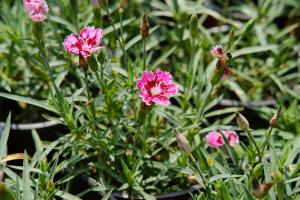How to Bring pH in Water Growing Plants Down
The pH level of water plays a significant role in the growth of plants. A pH that's too high or too low can cause several problems on plants, including nutrient deficiencies and stunted growth. As an enthusiastic gardener, it's essential to know ways on how to bring pH in water growing plants down to achieve healthy plants. Below are some effective methods:
Method #1: Add Vinegar to the Water
Vinegar is a household item that can lower your water's pH level. Its acidic properties make it a great tool in reducing the pH of water to make it more suitable for your plants. It's an easy, affordable, and quick remedy that you can use to correct the pH of your plant's water.
The amount of vinegar to add depends on the pH of the water you're using. For example, if the pH level of your water is 8, you can add one tablespoon of vinegar to one gallon of water to lower the pH to the range between 6-6.5. However, caution should be taken when adding vinegar to the water, as too much can acidify the soil and damage the plants.
Method #2: Use Citric Acid
Citric acid is another household item that can be used to lower the pH of the water. This natural substance is commonly found in lemon and other citrus fruits. It's an effective and organic method of lowering the pH of water without causing any harm to your plants.
To use citric acid, start by adding a small amount to the water, since it's very potent. Gradually add more, and you can verify the pH level of the water using a pH tester until you get the right pH range.
Method #3: Use Rainwater
Rainwater is naturally acidic, with a pH level ranging from 5.0 - 5.5, making it an excellent option for watering your plants. You can use a rain barrel to collect water during rainy days. The acidic nature of rainwater helps to balance the soil pH level and improve the plant's nutrient uptake. Plus, it's free and readily available, which is great news for gardeners on a budget.
Method #4: Use Sulfur
Sulfur is an excellent medium for lowering water pH levels. It's commonly found in garden centers and other plant supply stores. However, you need to use sulfur in moderation as too much can damage your plants. It's also essential to add it to your soil rather than the water, as it works best that way. Sulfur helps to modify the soil pH levels, which consequently affects the pH level of the water. It's a slower method than the previous methods mentioned, but the effects are long-lasting.
Method #5: Use Aquarium Peat Moss
Aquarium peat moss is an organic medium that can be used to lower the pH level of the water. It's available in most pet stores and garden centers. Aquarium peat moss is safe to use, even with delicate plants, as it's a natural product. The process of using the moss to lower water pH levels is relatively easy. Simply add some of the moss to the water and let it sit for a couple of days. The organic matter in the moss will gradually lower the pH level of your water, making it more habitable for your plants.
Conclusion
The water pH level is critical in ensuring that your plants grow healthily. The above methods are some of the effective and affordable ways of lowering pH levels in water. Ensure that you make regular checks on the pH level and take the necessary corrective steps to keep your plants healthy.

 how many times do yo...
how many times do yo... how many planted tre...
how many planted tre... how many pine trees ...
how many pine trees ... how many pecan trees...
how many pecan trees... how many plants comp...
how many plants comp... how many plants can ...
how many plants can ... how many plants and ...
how many plants and ... how many pepper plan...
how many pepper plan...































